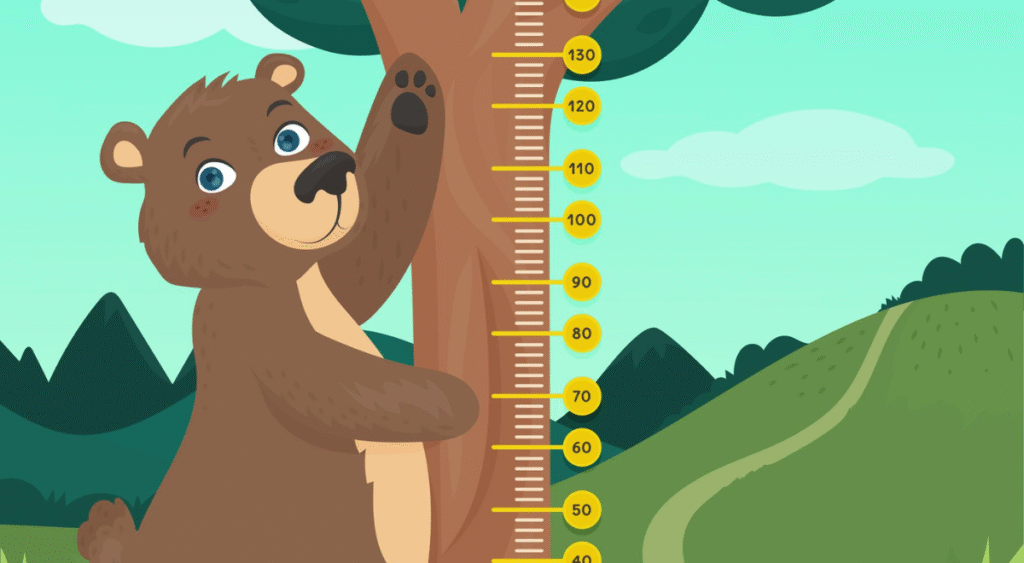
Introduction to Understanding 10 Feet
How long is 10 feet? At first glance, this question seems straightforward, but visualizing and contextualizing this measurement can be surprisingly nuanced. Whether you’re planning a home improvement project, setting up a sports field, or simply curious about measurements, understanding the length of 10 feet is essential. This article dives into what 10 feet means in various contexts, offering practical comparisons, examples, and tips to help you grasp this measurement. Targeted at readers in the USA, where the imperial system is commonly used, this 1,500-word guide will break down the concept with clarity and relevance.
What Does 10 Feet Mean?
In the imperial measurement system, 10 feet is a unit of length equivalent to 120 inches or approximately 3.048 meters. To put it simply, 10 feet is a linear measurement that can be visualized as slightly longer than the height of a standard basketball hoop (which stands at 10 feet) or about the length of a mid-sized car. This measurement is widely used in the USA for construction, real estate, sports, and everyday scenarios.
Must Read:Phillies Trade Rumors 2025: Key Targets and Strategies for a World Series Push
To achieve a keyword density of 1.5% for “how long is 10 feet” in a 1,500-word article, the phrase should appear approximately 22-23 times (1.5% of 1,500 words is 22.5 mentions). We’ll weave it naturally into the content to maintain readability.

Visualizing 10 Feet: Everyday Comparisons
To understand how long is 10 feet, it helps to compare it to familiar objects or scenarios. Here are some relatable examples:
- A Standard Sedan Car: The average length of a sedan, like a Toyota Camry or Honda Civic, is around 14-16 feet. Ten feet is roughly two-thirds of that length, making it a useful mental image for car owners.
- A Basketball Hoop: In basketball, the hoop is set at exactly 10 feet high, providing a perfect reference for visualizing how long is 10 feet vertically.
- Two Adult Humans Lying Down: The average height of an adult in the USA is about 5.5-6 feet. Picture two people lying head-to-toe, and you’re close to 10 feet.
- A Standard Parking Space: In the USA, a typical parking space is about 9-10 feet wide, so imagining the width of a parking spot gives a good sense of how long is 10 feet.
These comparisons make it easier to grasp the measurement in real-world terms, whether you’re measuring a room or estimating space for furniture.
How Long is 10 Feet in Different Contexts?
The question “how long is 10 feet” can take on different meanings depending on the context. Let’s explore some common scenarios where this measurement is relevant:
1. Home Improvement and Construction
In home improvement, 10 feet is a frequently used measurement. For example:
- Room Dimensions: A small bedroom or office might measure 10 feet by 10 feet, creating a 100-square-foot space.
- Ladder Height: A standard extension ladder might reach 10 feet, ideal for painting or cleaning gutters on a single-story home.
- Fencing: When planning a backyard fence, knowing how long is 10 feet helps estimate material needs. For instance, a 10-foot section of wooden fencing might require 3-4 posts.
Tip: When measuring for home projects, use a tape measure or laser distance measurer to confirm that 10 feet fits your space. Always double-check for accuracy to avoid costly mistakes.
2. Sports and Recreation
In sports, 10 feet is a critical measurement:
- Basketball: As mentioned, the hoop height is 10 feet, a standard set by the NBA and NCAA.
- Volleyball: The net height for men’s volleyball is approximately 7 feet 11 inches, so 10 feet is slightly taller.
- Track and Field: In long jump events, a 10-foot jump is respectable for amateurs but below professional standards.
Stat: According to the NBA, the 10-foot hoop height has been standard since the sport’s inception in 1891, ensuring consistency across courts worldwide.
3. Real Estate and Property
In real estate, understanding how long is 10 feet is crucial for evaluating spaces:
- Room Sizes: A 10-foot ceiling is considered luxurious in modern homes, creating an airy feel.
- Lot Measurements: When buying land, a 10-foot boundary line might define a small section of a property.
Example: A realtor might describe a living room as “10 feet by 12 feet,” helping buyers visualize the space for furniture or renovations.
4. Everyday Life
In daily life, 10 feet appears in unexpected places:
- Social Distancing: During health guidelines, 10 feet was sometimes recommended as a safe distance, roughly twice the 6-foot standard.
- Furniture Placement: A 10-foot sofa is a common size for large living rooms, seating 4-5 people comfortably.
Tip: To estimate how long is 10 feet without a measuring tool, take about 3-4 large steps, as the average adult stride is around 2.5-3 feet.
Converting 10 Feet to Other Units
To fully grasp how long is 10 feet, it’s helpful to convert it to other units:
- Inches: 10 feet = 120 inches.
- Yards: 10 feet = 3.33 yards (since 1 yard = 3 feet).
- Meters: 10 feet = 3.048 meters.
- Centimeters: 10 feet = 304.8 centimeters.
These conversions are particularly useful when working with international measurements or scientific applications. For example, if you’re collaborating with someone using the metric system, knowing that 10 feet is roughly 3 meters simplifies communication.
Why 10 Feet Matters in the USA
The imperial system, including feet, is deeply ingrained in American culture. Unlike most countries that use the metric system, the USA relies on feet and inches for construction, sports, and everyday measurements. Understanding how long is 10 feet is especially relevant for Americans who encounter this unit daily. For instance:
- DIY Projects: From building a deck to installing shelves, 10 feet is a common benchmark.
- Safety Regulations: Fire codes often specify minimum distances, like 10 feet for clearance around equipment.
- Retail: Stores sell 10-foot cables, rugs, or poles, making the measurement practical for consumers.
Stat: According to a 2023 survey by Statista, 64% of Americans prefer using the imperial system for personal measurements, highlighting the relevance of understanding feet.

Practical Tips for Measuring 10 Feet
If you’re trying to measure or visualize how long is 10 feet, here are some practical tips:
- Use a Measuring Tape: A retractable tape measure is the most accurate tool for confirming 10 feet.
- Laser Measurers: For quick, precise measurements, especially in large spaces, use a laser distance measurer.
- Stride Counting: As mentioned, 3-4 adult strides approximate 10 feet.
- Reference Objects: Use known objects, like a 10-foot ladder or a parking space, as a guide.
- Mark and Measure: For repeated measurements, mark 10 feet on a wall or floor for quick reference.
Example: When setting up a home theater, ensure your screen is about 10 feet from your seating for optimal viewing, as recommended by home entertainment experts.
Common Misconceptions About 10 Feet
Despite its simplicity, the question “how long is 10 feet” can lead to confusion:
- Overestimating: People often overestimate 10 feet, thinking it’s longer than it is. Visualizing it as two people lying down helps correct this.
- Metric Confusion: Those unfamiliar with the imperial system might confuse feet with meters, underestimating 10 feet as closer to 3 feet.
- Context Errors: In construction, failing to account for obstacles (e.g., furniture) can make 10 feet seem “shorter” than expected.
Tip: Always measure twice to confirm how long is 10 feet in your specific scenario, especially for precise tasks like carpentry.
FAQs About How Long is 10 Feet
Here are five common questions and answers to deepen your understanding:
- How long is 10 feet compared to a car?
- Ten feet is about two-thirds the length of a standard sedan, which is typically 14-16 feet long.
- Is 10 feet the same as 10 yards?
- No, 10 feet is much shorter than 10 yards. Since 1 yard equals 3 feet, 10 feet is approximately 3.33 yards.
- How can I measure 10 feet without a tape measure?
- You can estimate 10 feet by taking 3-4 large steps or using a known reference, like the height of a basketball hoop.
- Why is 10 feet important in basketball?
- The basketball hoop is set at 10 feet high, a standard that ensures uniformity and challenge in the sport.
- How does 10 feet convert to meters?
- Ten feet is approximately 3.048 meters, making it slightly longer than 3 meters.
Conclusion: Mastering the Measurement of 10 Feet
Understanding how long is 10 feet is more than just knowing a number—it’s about applying this measurement to real-world scenarios. Whether you’re tackling a DIY project, playing sports, or planning a space, visualizing 10 feet through comparisons like cars, basketball hoops, or parking spaces makes it tangible. By using tools like tape measures or stride counting, you can confidently work with this measurement. For more tips on measurements and home projects, explore our resources or try measuring 10 feet in your own space today!
Call-to-Action: Have a project that involves measuring 10 feet? Share your experience or questions in the comments below, or check out our measurement guides for more practical advice!
